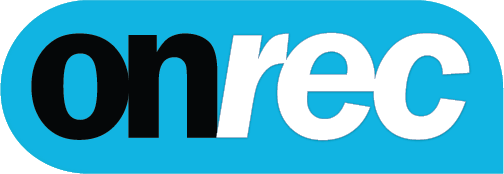As these firms scale, more of them are being drawn into the orbit of IFRS 16, the international accounting standard that overhauled how leases are treated in financial statements. Originally designed with larger enterprises in mind, IFRS 16 now affects a growing segment of mid-sized and fast-expanding agencies that rely heavily on leased office space, equipment, and vehicles.
Understanding IFRS 16 in a Recruitment Context
IFRS 16, which became effective in 2019, requires companies to bring almost all leases onto the balance sheet as a “right-of-use asset” and a corresponding lease liability. Under the old IAS 17 rules, operating leases were simply treated as rental expenses, but IFRS 16 makes those same commitments visible as long-term obligations. For recruitment agencies—many of which operate from multiple serviced offices or leased coworking spaces—this change dramatically alters reported assets, liabilities, and even profitability metrics.
Why Recruitment Agencies Feel the Impact
Recruitment businesses have unique characteristics that amplify the impact of IFRS 16. Rapid expansion across regions, short lease terms with renewal options, and flexible workspace arrangements create a complex mix of lease contracts. In particular, serviced offices and co-working hubs, which have become staples of modern recruitment, often include embedded lease components that must now be separated and capitalised. For finance teams, identifying which contracts qualify as leases under IFRS 16 can be surprisingly challenging.
The Upside: Clarity and Credibility
While adoption may be painful, IFRS 16 brings advantages for growing agencies seeking investment or acquisition. Recognising lease liabilities and right-of-use assets enhances transparency—making financial statements more representative of real commitments. Potential investors and lenders gain a clearer view of long-term obligations, allowing more accurate valuation and risk assessment. For recruitment founders eyeing private equity backing, this transparency can make the difference between an uncertain valuation and a confident bid.
Practical Challenges on the Ground
However, implementing IFRS 16 is not without friction. Many recruitment agencies lack the in-house accounting expertise to perform lease-by-lease assessments, and traditional spreadsheets can’t easily model amortisation schedules or interest calculations. Add to that the constant churn of lease contracts in fast-growing firms, and it becomes easy to see why manual compliance quickly becomes untenable.
Technology to the Rescue
Luckily, modern accounting software has evolved to tackle the IFRS 16 workload head-on. There is some brilliant lease accounting software for IFRS 16 available. Cloud-based solutions like FinQuery, Trullion, and Sage Intacct automate the recognition, measurement, and reporting of lease data. Many integrate directly with ERP systems or accounting platforms, making compliance seamless. Some even leverage AI to extract lease terms from PDF contracts and auto-populate amortisation schedules.
Core Benefits of Automation in IFRS 16 Implementation
- Accuracy: Reduces manual errors in calculations and journal postings.
- Efficiency: Saves countless hours of spreadsheet maintenance and reconciliations.
- Consistency: Ensures uniform treatment of leases across multiple business units.
- Audit Readiness: Creates complete, automated audit trails.
- Scalability: Handles hundreds of contracts as the business grows.
These tools don’t just make compliance easier—they empower finance leaders to forecast cash flow more precisely and make strategic location decisions based on real lease data.
Impact on Valuations and Investor Confidence
One often overlooked benefit of IFRS 16 adoption for recruitment agencies is its effect on business valuation. By recognising lease liabilities on the balance sheet, agencies demonstrate a truer picture of financial health—both obligations and assets. For investors, that level of transparency can increase confidence and make valuation models more reliable. It also prevents sudden shocks during due diligence, where hidden lease commitments might otherwise emerge as red flags. Private equity firms, in particular, now view early IFRS 16 compliance as a sign of financial maturity, signalling that the agency is operating with the discipline expected of a mid-market or pre-IPO company.
Future-Proofing Through Digital Transformation
As recruitment agencies continue to digitise their operations, embracing IFRS 16 compliance is a natural extension of broader financial transformation. Many firms are pairing lease-accounting automation tools with their existing cloud ERPs, payroll platforms, and CRM systems, creating an integrated ecosystem that provides a real-time financial snapshot. The result isn’t just compliance—it’s control. Agencies can simulate lease renewals, forecast interest impacts, and model different growth scenarios before signing new office deals. Those insights empower CFOs and founders alike to make data-driven expansion decisions, ensuring that growth remains sustainable even as the industry becomes more competitive and capital-conscious.
The Human Factor: Training and Adaptation
Technology alone doesn’t guarantee success. Finance teams need training to interpret the results, adjust budgeting processes, and communicate the new numbers to stakeholders. For many recruitment agencies, this represents a cultural change: lease costs, once buried in operating expenses, now appear as depreciation and interest. Helping non-finance executives understand that shift is essential for meaningful financial dialogue.
Looking Ahead: A Stronger Financial Foundation
As more recruitment firms expand internationally, IFRS 16 adoption will become unavoidable. The good news is that those who embrace it early gain more than compliance—they gain strategic insight. By making lease obligations visible, IFRS 16 allows agency leaders to compare office costs, renegotiate contracts intelligently, and plan expansion with full financial clarity. In a competitive industry driven by people, transparency may just be the next big differentiator.






